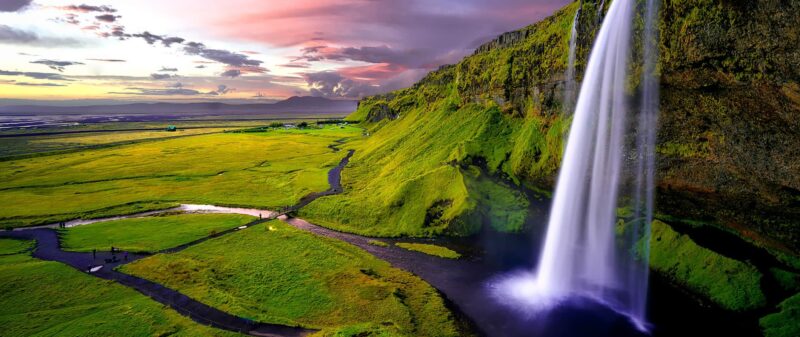Landing in Iceland for the first time takes you into a land built by legends and nature’s raw forces. Every mountain watches over you. Each waterfall hums with ancient stories, and the geysers erupt as if the earth itself has something to say.
Traveling through this land means seeing more than sights. You’ll feel Iceland’s wild spirit in every step, each view telling a story shaped by nature’s hand.
Also, check out our guide for traveling to New Zealand as a solo traveler.
The journey offers scenes as fierce as they are beautiful. One moment, you stand by waves crashing onto black sand. The next, you soak in rich mineral waters under an endless northern sky.
Roads wind through landscapes untouched by time. Glaciers loom like silent giants, while volcanoes rise as reminders of Iceland’s fiery core.
To guide you, here is a list of 20 essential places. Each spot holds a piece of Iceland’s soul and offers memories that stay with you long after the journey ends.
- Thingvellir National Park
- Blue Lagoon
- Reykjavik
- Jökulsárlón Glacier Lagoon
- Vatnajökull National Park
- Golden Circle
- Reynisfjara Black Sand Beach
- Northern Lights
- Snæfellsnes Peninsula
- Dettifoss Waterfall
- Landmannalaugar
- Silfra Fissure
- Kerid Crater
- Asbyrgi Canyon
- Húsavík
- Laugavegur Trail
- Akureyri
- Strokkur Geyser
- Seljalandsfoss Waterfall
- Hvítserkur Sea Stack
1. Thingvellir National Park
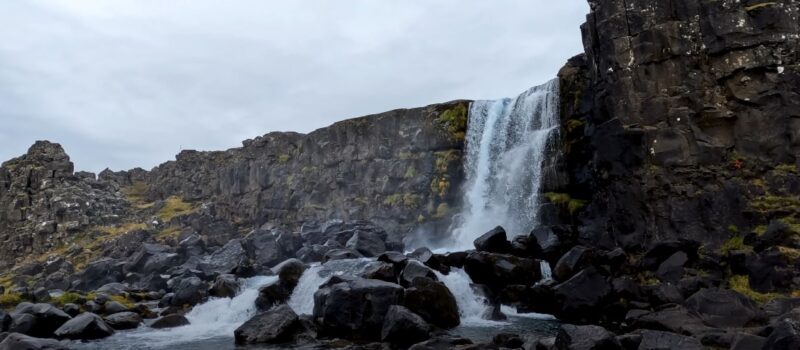
| Location | Southwestern Iceland, about 45 minutes from Reykjavik |
|---|---|
| UNESCO Status | World Heritage Site |
| Known For | Continental drift between North American and Eurasian plates, historical significance |
| Main Activities | Hiking, sightseeing, snorkeling, diving at Silfra Fissure |
| Best Time to Visit | June to August for mild weather, September to April for Northern Lights |
Thingvellir National Park stands as one of Iceland’s most sacred grounds. Here, history, geology, and mythology come together to create a landscape unlike any other. Walking through Thingvellir means stepping between continents as North America and Eurasia pull apart. This split in the earth is a quiet act of nature’s power, both unsettling and mesmerizing.
Thingvellir also tells Iceland’s story. Centuries ago, this land held the Althing, Iceland’s first parliament and one of the oldest in the world. Leaders gathered here, making decisions that shaped Iceland’s future. Standing in this place, you feel the weight of Iceland’s legacy and the rugged land that helped create it.
For those wanting a closer experience, the Silfra Fissure offers waters so clear they reveal every detail below. Here, you can move between two tectonic plates in an unforgettable experience. Thingvellir offers more than just views. Every step connects you with Iceland’s past and the powerful forces that continue shaping it.
2. Blue Lagoon
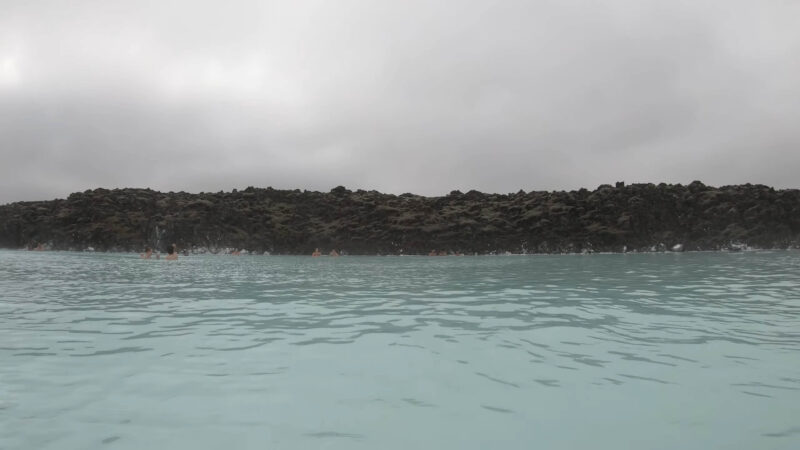
| Location | Grindavík, Southwestern Iceland, near Keflavik International Airport |
|---|---|
| Known For | Milky-blue geothermal waters, rich in silica and minerals, spa experience |
| Main Activities | Soaking in geothermal pools, skin treatments, in-water massages |
| Best Time to Visit | Year-round, with winter offering fewer crowds and summer offering longer days |
Blue Lagoon offers a tranquil escape on any Iceland journey. With its milky-blue waters spreading across an ancient lava field, the lagoon feels like a place from another world. Warm geothermal waters surround you, while a soft mist drifts over the surface, quieting everything around you.
The mineral-rich waters hold a blend of silica and algae that leaves your skin feeling completely refreshed. Blue Lagoon invites you to pause, letting go of every concern and embracing a moment of pure relaxation.
More than just a spa, Blue Lagoon captures the essence of Iceland’s natural charm. Here, you connect with the geothermal forces of the earth, finding comfort in its warmth and peace in its beauty.
3. Reykjavik
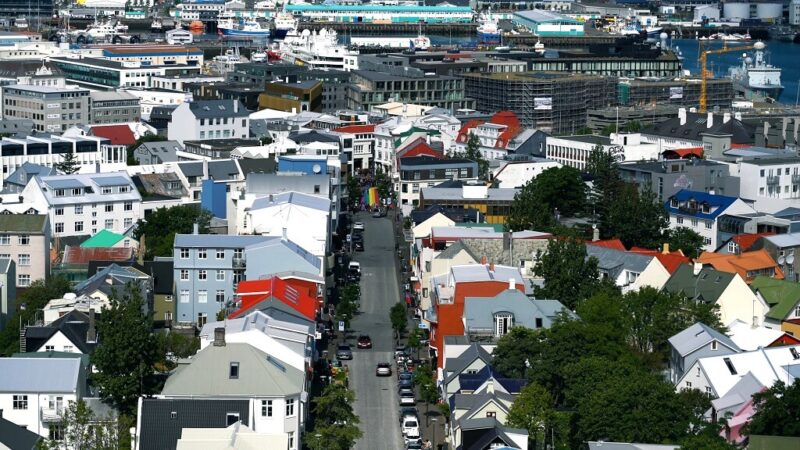
| Location | Southwestern Iceland, Iceland’s capital city |
|---|---|
| Known For | Vibrant arts, music, and cultural scene; historic sites and modern architecture |
| Main Activities | Exploring museums, visiting Hallgrímskirkja, local cuisine, nightlife |
| Best Time to Visit | Year-round, with summer offering festivals and winter for Northern Lights |
Reykjavik is Iceland’s heart, alive with culture, history, and a unique northern charm. Colorful rooftops line the streets, while modern and historic architecture blend seamlessly in every direction. You can feel the city’s energy as you walk, each corner offering a new piece of its story.
The iconic Hallgrímskirkja rises over the city, a landmark that stands as a testament to Icelandic resilience and creativity. Museums and galleries bring Iceland’s past to life, offering a journey through Viking history, volcanic landscapes, and a rich artistic heritage.
But Reykjavik isn’t just about looking back. Its streets are alive with music, and every café or bar hums with the warmth of locals and visitors alike. In Reykjavik, every experience connects you with Iceland’s vibrant spirit, making it a place that feels like more than just a city.
4. Jökulsárlón Glacier Lagoon
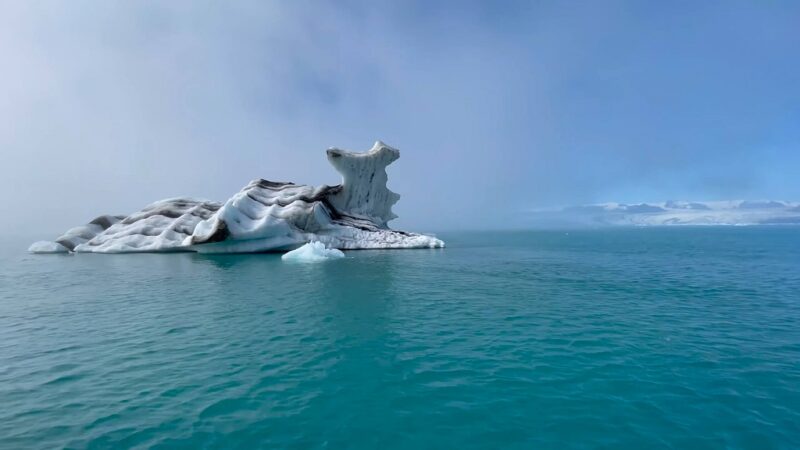
| Location | Vatnajökull National Park, Southeastern Iceland |
|---|---|
| Known For | Floating icebergs, surreal glacial lagoon, stunning scenery |
| Main Activities | Boat tours, photography, wildlife spotting (seals) |
| Best Time to Visit | Summer for boat tours, winter for Northern Lights views |
Jökulsárlón Glacier Lagoon feels like something straight out of a dream. Massive icebergs, broken off from nearby glaciers, drift slowly across deep blue waters. Each iceberg has its own shape, its own story, worn by time and elements. The water reflects shades of blue and white under the sky, creating an atmosphere that’s both quiet and otherworldly.
A boat tour lets you weave through these towering chunks of ice, getting close enough to see their textures and hear the soft creaking of the frozen giants as they move. Seals sometimes swim by, curious and calm, adding to the magic of this place.
Jökulsárlón isn’t just a sight. It’s an experience that connects you to the glaciers, the cold, and the vastness of Iceland’s natural beauty. It’s a place where time seems to pause, letting you feel the wonder of nature at its most raw.
5. Vatnajökull National Park
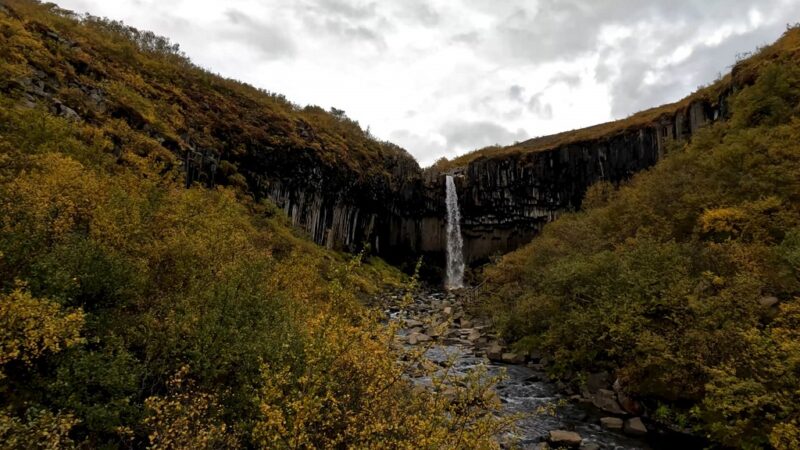
| Location | Southeastern Iceland |
|---|---|
| Known For | Europe’s largest glacier, diverse landscapes, hiking trails |
| Main Activities | Hiking, glacier tours, ice cave exploration, photography |
| Best Time to Visit | June to August for hiking, winter for ice cave exploration |
Vatnajökull National Park holds some of Iceland’s most awe-inspiring landscapes. Here, Europe’s largest glacier stretches as far as the eye can see, with icy tongues reaching down into deep valleys.
This park isn’t just about glaciers, though. It’s a world of towering mountains, rugged lava fields, and stunning waterfalls that come together to create scenes that feel both wild and timeless.
Hiking trails wind through the park, each offering a new perspective on this landscape carved by ice and fire. Guided glacier tours let you walk across ancient ice, feeling the solid cold beneath your feet and the power of nature surrounding you.
In winter, shimmering ice caves form within the glacier, revealing a hidden world of blue chambers and intricate ice formations.
6. Golden Circle
| Location | Southwestern Iceland |
|---|---|
| Known For | Popular tourist route featuring Thingvellir, Gullfoss, and Geysir |
| Main Activities | Sightseeing, photography, nature exploration |
| Best Time to Visit | Year-round, though summer offers better weather |
The Golden Circle is Iceland’s most iconic route, drawing travelers to its stunning landmarks. Starting with Thingvellir National Park, you step between tectonic plates, surrounded by cliffs and ancient lava. Next, Gullfoss waterfall roars as it cascades over rocky steps, its power filling the air with mist.
The journey continues to Geysir, the site that gave geysers their name. Here, Strokkur erupts every few minutes, sending a steaming column high into the sky. Each stop on the Golden Circle offers a piece of Iceland’s nature, all within a day’s journey from Reykjavik.
It’s an easy way to see Iceland’s beauty up close, experiencing the wild landscapes that define the country.
7. Reynisfjara Black Sand Beach
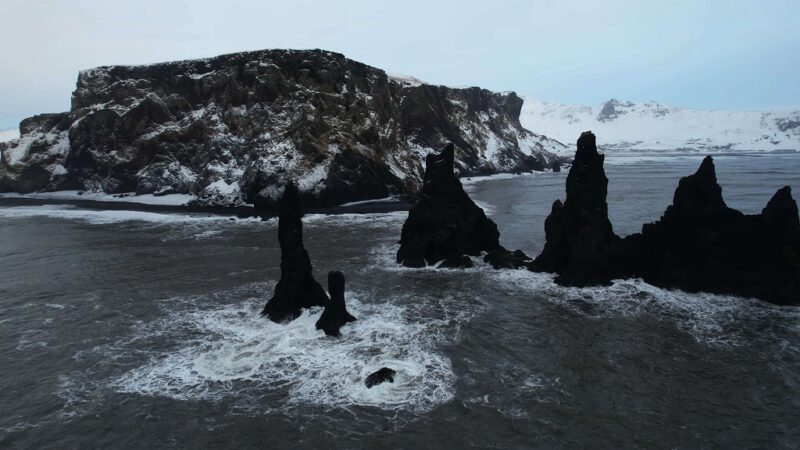
| Location | South Coast of Iceland, near the village of Vík |
|---|---|
| Known For | Black sand, basalt columns, powerful waves |
| Main Activities | Sightseeing, photography, exploring basalt columns |
| Best Time to Visit | Year-round, though be cautious of waves |
Reynisfjara Black Sand Beach feels like a scene out of Icelandic folklore. Its black sands, shaped by ancient volcanic activity, stretch under towering cliffs and basalt columns that rise like natural sculptures.
The waves here are as fierce as they are mesmerizing, crashing against the shore with a force that commands respect. Exploring the beach reveals unique rock formations, each one adding to the beach’s wild beauty.
8. Northern Lights
| Location | Visible across Iceland, best in dark rural areas |
|---|---|
| Known For | Aurora Borealis, natural light display |
| Main Activities | Aurora viewing, photography |
| Best Time to Visit | September to April |
The Northern Lights are one of Iceland’s most captivating experiences. During the dark winter months, skies sometimes fill with shifting colors, transforming the night into a light show that feels almost otherworldly.
Away from city lights, you stand under green and purple ribbons stretching across the sky. Watching the Northern Lights is a quiet, awe-filled experience that reminds you of nature’s magic.
9. Snæfellsnes Peninsula
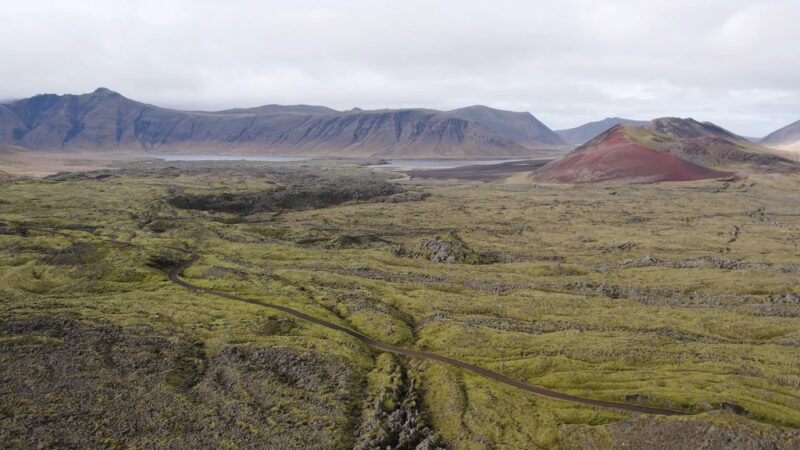
| Location | Western Iceland |
|---|---|
| Known For | Glaciers, volcanoes, coastal views, “Iceland in miniature” |
| Main Activities | Hiking, sightseeing, exploring coastal villages |
| Best Time to Visit | Year-round |
The Snæfellsnes Peninsula offers everything that defines Icelandic landscapes. Known as “Iceland in miniature,” it has a bit of everything – glaciers, volcanoes, black sand beaches, and scenic coastal cliffs.
Snæfellsjökull, a glacier-topped volcano, looms over the area, and its presence adds an unmistakable magic to the peninsula. With each turn, Snæfellsnes reveals a new view, each one carrying Iceland’s rugged, timeless beauty.
10. Dettifoss Waterfall
| Location | Vatnajökull National Park, Northeastern Iceland |
|---|---|
| Known For | Europe’s most powerful waterfall |
| Main Activities | Hiking, photography, sightseeing |
| Best Time to Visit | Summer for accessibility, winter for a unique frozen view |
Dettifoss, Europe’s most powerful waterfall, thunders down with an intensity that leaves you breathless. Set in a rugged canyon, its churning waters send mist high into the air, filling the surrounding area with the sound and feel of raw energy.
The sight of Dettifoss is unforgettable, a reminder of nature’s sheer force in one of Iceland’s most stunning locations.
11. Landmannalaugar
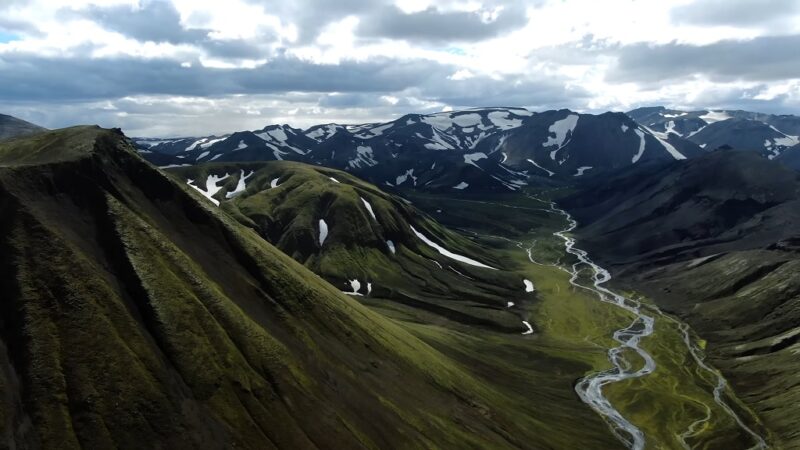
| Location | Highlands of Iceland, part of Fjallabak Nature Reserve |
|---|---|
| Known For | Colorful rhyolite mountains, natural hot springs |
| Main Activities | Hiking, soaking in hot springs, photography |
| Best Time to Visit | June to September |
Landmannalaugar’s colorful mountains, shaped by volcanic activity, create a landscape that feels surreal. Shades of red, yellow, and green paint the hills, contrasting against the black lava fields below.
After a day of hiking, the natural hot springs offer a place to relax and take in the scenery. Landmannalaugar captures the Highlands’ wild beauty, leaving a lasting impression on all who visit.
12. Silfra Fissure
| Location | Thingvellir National Park, Southwestern Iceland |
|---|---|
| Known For | Diving and snorkeling between tectonic plates, clear water |
| Main Activities | Snorkeling, diving |
| Best Time to Visit | Year-round |
Silfra Fissure offers a rare experience in crystal-clear waters, where you swim between the North American and Eurasian tectonic plates.
The water here is so pure that visibility stretches over 100 meters, allowing you to see every rock and crevice below. Silfra Fissure is not just a diving spot. It’s an encounter with Iceland’s geology, offering a view of an underwater world like no other.
13. Kerid Crater
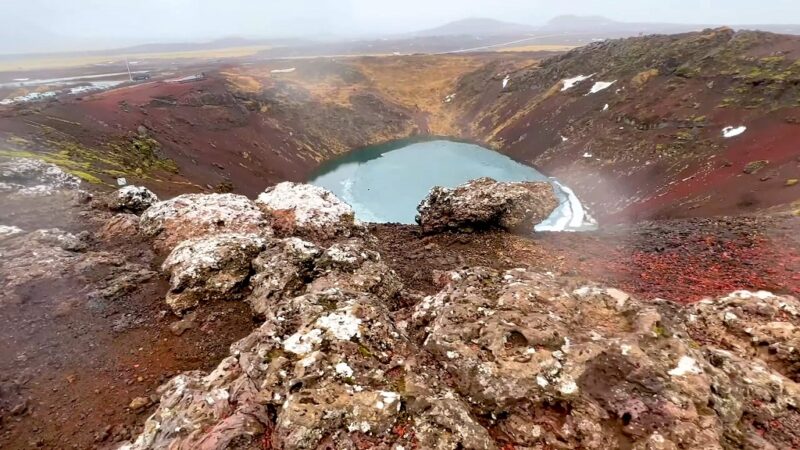
| Location | South Iceland, part of the Golden Circle |
|---|---|
| Known For | Volcanic crater lake with striking colors |
| Main Activities | Hiking, photography |
| Best Time to Visit | Year-round |
Kerid Crater’s vivid colors set it apart. The bright blue lake contrasts with red and green crater walls, creating a scene that feels almost otherworldly. This volcanic crater, formed thousands of years ago, offers trails that lead you around the rim and down to the lake.
Every angle at Kerid provides a new view of its stunning color palette, making it a must-see on the Golden Circle route.
14. Asbyrgi Canyon
| Location | Northeastern Iceland, part of the Diamond Circle route |
|---|---|
| Known For | Horseshoe-shaped canyon, Icelandic mythology |
| Main Activities | Hiking, sightseeing, exploring mythology |
| Best Time to Visit | Summer for the best hiking conditions |
Asbyrgi Canyon’s horseshoe shape and lush vegetation make it one of Iceland’s most unique landscapes. Legends say this canyon formed from a hoofprint left by Odin’s eight-legged horse, Sleipnir.
Surrounded by towering cliffs, the canyon is quiet and green, providing a stark contrast to Iceland’s usual rugged terrain.
Walking through Asbyrgi feels like stepping into Iceland’s mythical past.
15. Húsavík
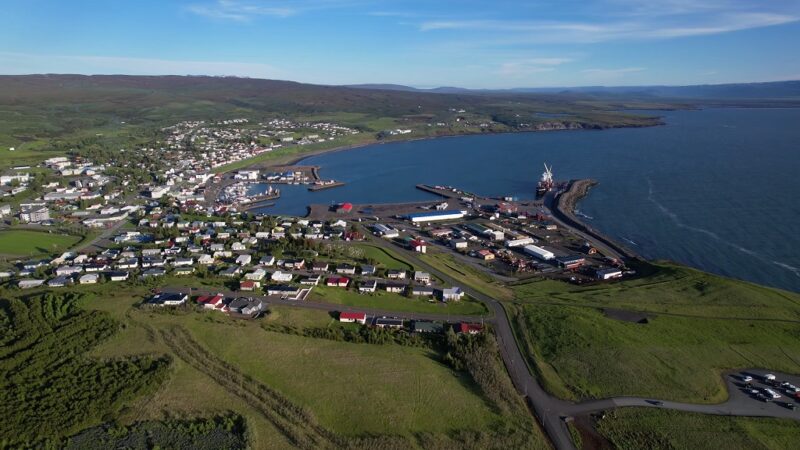
| Location | Northeastern Iceland, on Skjálfandi Bay |
|---|---|
| Known For | Whale watching, charming town atmosphere |
| Main Activities | Whale watching, exploring local museums, sightseeing |
| Best Time to Visit | April to October for whale-watching season |
Húsavík, often called Iceland’s whale-watching capital, is a small town with big sights. Skjálfandi Bay’s waters attract many species of whales, making boat tours an unforgettable experience.
The town itself has a charm that invites visitors to stroll along its harbor and visit its whale museum. Húsavík offers both natural beauty and a warm welcome from the locals.
16. Laugavegur Trail
| Location | Highlands of Iceland, from Landmannalaugar to Thórsmörk |
|---|---|
| Known For | Diverse landscapes, challenging hiking trail |
| Main Activities | Hiking, camping, photography |
| Best Time to Visit | June to September |
The Laugavegur Trail is Iceland’s most famous hiking route, stretching across varied landscapes that include rhyolite mountains, lava fields, hot springs, and glaciers. This trail demands endurance but rewards hikers with views that change dramatically along the way.
Each step on Laugavegur feels like moving through different worlds, capturing the essence of Iceland’s Highlands in every direction.
17. Akureyri
| Location | Northern Iceland, on Eyjafjörður fjord |
|---|---|
| Known For | Botanical gardens, cultural activities, base for northern exploration |
| Main Activities | Sightseeing, visiting botanical gardens, exploring fjords |
| Best Time to Visit | June to August for summer activities |
Akureyri, known as Iceland’s northern capital, is a small city with big character. Nestled by Eyjafjörður fjord, it offers easy access to nearby natural attractions, while also boasting a thriving cultural scene. Akureyri’s botanical gardens are an unexpected treat, filled with native and exotic plants that bloom beautifully in the short Icelandic summer.
The fjord setting and friendly local atmosphere make Akureyri an ideal stop for anyone exploring the North.
18. Strokkur Geyser
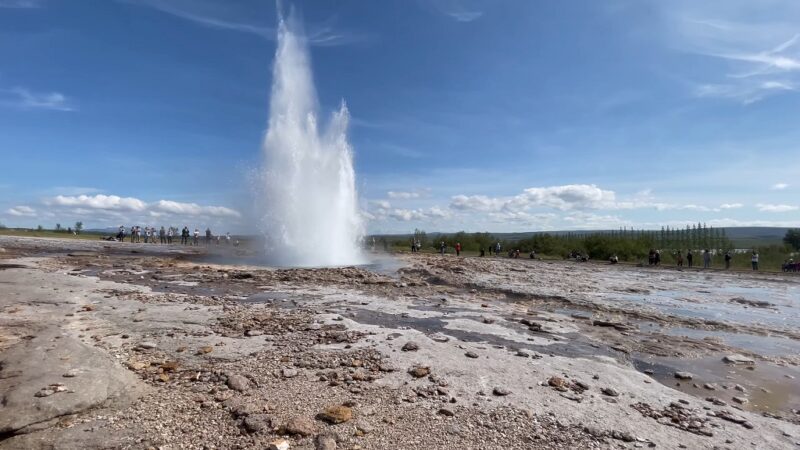
| Location | Part of the Golden Circle, Haukadalur Valley |
|---|---|
| Known For | Frequent eruptions, iconic Icelandic geyser |
| Main Activities | Geyser viewing, photography |
| Best Time to Visit | Year-round |
Strokkur Geyser brings Iceland’s geothermal power to life. Every few minutes, it erupts, sending hot water up to 30 meters into the air. The anticipation builds as the geyser swells and then releases in a burst, making it a favorite spot for visitors.
Strokkur’s eruptions capture the intense geothermal energy that runs beneath Iceland’s surface, creating a natural spectacle that’s as powerful as it is captivating.
19. Seljalandsfoss Waterfall
| Location | South Coast of Iceland, near the Ring Road |
|---|---|
| Known For | 200-foot waterfall with a cave behind it |
| Main Activities | Hiking, photography, walking behind the waterfall |
| Best Time to Visit | Summer for easy access behind the falls |
Seljalandsfoss Waterfall offers a unique experience that lets you see the falls from behind. The path leads into a shallow cave, giving you a view framed by the waterfall’s powerful cascade. Standing there, with water crashing down just in front of you, creates an unforgettable moment.
Seljalandsfoss’s beauty, paired with the chance to get close, makes it one of Iceland’s most visited natural sites.
20. Hvítserkur Sea Stack
| Location | North Iceland, off Vatnsnes Peninsula |
|---|---|
| Known For | Unusual rock formation resembling a dragon |
| Main Activities | Sightseeing, photography |
| Best Time to Visit | Year-round |
Hvítserkur Sea Stack stands off the northern coast like a lonely guardian of the sea. Resembling a dragon drinking from the water, this rock formation captures attention with its dramatic shape and setting.
Legend says Hvítserkur was once a troll, frozen by sunlight, adding a touch of Icelandic folklore to this striking natural sculpture.
Best Accommodation in Iceland
When planning where to stay in Iceland, options range from Reykjavik’s hotels to countryside cabins. Here are specific choices across different preferences and budgets.
Hotels and Guesthouses in Reykjavik
- Hotel Borg: Located in Austurvöllur Square, known for Art Deco style and modern amenities. Rates from $250 per night.
- Kex Hostel: Set in a former biscuit factory, offering a social environment and budget dorms starting at $45.
- Canopy by Hilton: Trendy, centrally located, with rooms starting at $230 per night.
Cabins and Cottages with Views
- Panorama Glass Lodge: In Hvalfjörður fjord, cabins with glass ceilings for stargazing, from $480 per night.
- Ásbyrgi Cottage: Close to Asbyrgi Canyon in North Iceland. Rates start around $150 per night.
- Black Beach Suites: Near Reynisfjara Beach, with views of black sands. Prices start from $160.
Farm Stays for Local Experience
- Efstidalur II Farm Hotel: Near Laugarvatn, includes homemade dairy products. Rooms from $180 per night.
- Skálakot Manor: In South Iceland near Seljalandsfoss, offering horseback riding. Prices start from $280.
- Miðgardur Farm Stay: Northern Iceland, on a working farm with Icelandic animals. Rooms start around $120.
Eco-Friendly Lodges
- Ion Adventure Hotel: Near Thingvellir National Park, geothermal energy powered. Rooms start at $360.
- FossHotel Glacier Lagoon: Between Skaftafell and Jökulsárlón, offering glacier views from $280 per night.
- Deplar Farm: High-end lodge in the Troll Peninsula, starting at $2,300 per night.
Affordable Hostels and Campsites
- Reykjavik City Hostel: Budget-friendly with eco-friendly practices, dorms start around $35 per night.
- Skaftafell Campground: In Vatnajökull National Park, tent fees around $20 per night.
- Camp Egilsstaðir: East Iceland campsite with kitchen facilities, fees around $25 per night.
Where and What to Eat in Iceland?
Reykjavik Street Food
- Bæjarins Beztu Pylsur: Iceland’s famous hot dog stand since 1937. Topped with crispy onions, ketchup, mustard, and remoulade. Located downtown. Around $5 per hot dog.
- Icelandic Fish & Chips: A healthier fish and chips version with spelt batter and skyr dips, near the Old Harbor. Meals range from $15 to $20.
Local Seafood Restaurants
- Messinn: Known for Icelandic fish dishes like pan-fried arctic char and langoustines. Casual spot in Reykjavik. Main courses around $25.
- Saegreifinn (The Sea Baron): Famous for lobster soup and seafood skewers. Old Harbor location. Lobster soup costs about $12, skewers between $10 and $15.
Farm-to-Table Dining
- Friðheimar Tomato Farm: A greenhouse restaurant in Reykholt serving tomato-based dishes grown on-site. Popular for soups and ravioli. Meals range from $20 to $30.
- Geiri Smart Restaurant: Modern Icelandic dishes with locally sourced ingredients like lamb and seafood. Located in Reykjavik. Mains average $35.
Traditional Icelandic Dishes
- Matur og Drykkur: Traditional recipes with a twist, offering dishes like fish stew and lamb shanks. Reykjavik location, main dishes between $25 and $40.
- Þrir Frakkar (Three Coats): Known for Icelandic classics like whale meat and fermented shark for adventurous eaters. Meals from $20 to $50.
Unique Experiences
- Kaffi Loki: Close to Hallgrímskirkja, offering Icelandic rye bread, smoked lamb, and herring plates. Prices range from $10 to $20.
- Perlan Restaurant: Upscale dining with views over Reykjavik, known for seasonal Icelandic dishes. Main courses around $50.
If you want to check out our detailed guide about best restaurants in Iceland, click here.
Transport Options and Tips
Exploring Iceland’s landscapes requires knowing the best ways to travel between sights. Options range from self-driving to guided tours, each with unique benefits. For maximum freedom, renting a car is often ideal, while tours can provide stress-free travel with expert guides.
Car Rental and Driving
| Best for | Flexible travel, exploring remote areas, Ring Road trips |
|---|---|
| Requirements | Valid driver’s license, credit card, minimum age (typically 20-25) |
| Popular Rental Companies | Blue Car Rental, Hertz Iceland, SADcars |
- Iceland’s Ring Road (Route 1): The main route encircling the country, ideal for a full Iceland tour.
- F-Roads: Access to highland areas, open only in summer and require a 4×4 vehicle.
- Winter Conditions: Roads can be icy and challenging. Rentals often include studded tires; consider checking weather and road updates on safetravel.is.
- Campervans: With camping as an affordable way to see Iceland, campervan rentals come in different styles, sizes, and price points. The vans also vary by amenities and inclusions, catering to different kinds of outdoor enthusiasts. Check out Cozy Campers for camper rental options that are perfect for exploring Iceland’s stunning landscapes at your own pace.
Public Transport and Tours
| Best for | Budget travelers, those not comfortable with driving, single-day trips |
|---|---|
| Popular Tour Companies | Gray Line Iceland, Reykjavik Excursions, Arctic Adventures |
- Bus Network: Limited to urban areas and popular routes. Suitable for those sticking to main tourist sites.
- Tours: Cover popular routes like the Golden Circle and South Coast, and include activities such as glacier hikes.
Packing Essentials
Packing correctly can make or break your Iceland trip. Layers and weather-proof gear are essential, as Iceland’s weather changes frequently. Each season brings unique conditions, but some essentials stay the same.
| Waterproof Jacket and Pants | For unpredictable rain and wind |
| Thermal Layers | Insulation in colder temperatures |
| Sturdy Hiking Boots | Traction for rough, rocky terrain |
| Power Adapter | Iceland uses European outlets (Type C and F) |
- Winter (November to March): Pack a heavier down jacket, insulated gloves, and crampons for icy trails.
- Summer (June to August): Lightweight layers, sun protection, and bug spray for areas with midges (insects).
Must-Know Tips for Visiting Iceland in 2024
Iceland has specific guidelines for travelers, aiming to protect its unique environment.
Tourist Season and Crowds
| High Season | June to August (Summer) |
|---|---|
| Shoulder Seasons | April to May, September to October |
| Low Season | November to March (Winter) |
- High Season Tips: Book accommodations, car rentals, and popular tours months in advance.
- Winter Considerations: Fewer tourists, but limited access to highland areas; ideal for Northern Lights viewing.
Respect the Land
- Leave No Trace: Stick to marked trails and respect restricted areas.
- No Off-Road Driving: Strictly prohibited to prevent damage to the landscape.
- Camping Rules: Camping is only permitted at designated sites unless you have landowner permission.
Top Outdoor Activities in Iceland
From glacier hikes to whale watching, Iceland’s outdoor activities allow visitors to experience its natural beauty up close.
| Activity | Best Locations | Best Time |
|---|---|---|
| Whale Watching | Húsavík, Reykjavik | April to October |
| Glacier Hiking | Vatnajökull, Sólheimajökull | Year-round |
| Snorkeling/Diving at Silfra | Thingvellir National Park | Year-round |
- Glacier Hiking: Guided tours on Sólheimajökull or Vatnajökull glaciers provide safe access and expert knowledge.
- Northern Lights Tours: Available from September to April. Popular spots include Thingvellir and Kirkjufell mountain.
- Snorkeling/Diving at Silfra: Clear waters between tectonic plates; visibility up to 100 meters.
What to Know as a Visitor
| Language | Icelandic; English widely spoken |
| Tipping | Not expected; service is included |
| Holidays | National Day (June 17), Þorrablót (midwinter festival) |
Local Etiquette
- Use Designated Trails: Icelandic nature is fragile. Off-trail walking can cause damage.
- Be Aware of Weather Warnings: Locals take weather conditions seriously, so it’s essential to heed any advisories.
- Engage with Local Traditions: Consider trying traditional foods like skyr, or learning about legends tied to local sites.
FAQs
What is the best time to visit Iceland for milder weather and fewer crowds?
For milder weather with fewer crowds, consider visiting Iceland in the shoulder seasons: April-May and September-October. These months offer manageable temperatures and fewer tourists than peak summer, making it easier to enjoy popular sites without the high-season rush.
Are there any unique wildlife experiences in Iceland besides whale watching?
Yes, Iceland has unique wildlife experiences beyond whale watching. Puffin colonies are common along the cliffs in summer, especially near Dyrhólaey and the Westman Islands. Additionally, seal watching is popular at spots like Jökulsárlón and Vatnsnes Peninsula.
Is it safe to drink tap water in Iceland?
Yes, Iceland’s tap water is among the purest in the world, sourced from natural springs. You can safely drink it straight from the tap, so bringing a reusable water bottle is a great option.
Do I need cash, or are credit cards widely accepted in Iceland?
Credit and debit cards are widely accepted throughout Iceland, even for small purchases. Many places do not accept cash, so carrying a card is more practical for most transactions.
How reliable is the internet in Iceland, especially in remote areas?
Iceland has good internet coverage, with free Wi-Fi in most accommodations, cafes, and popular tourist spots. However, in very remote or highland areas, the connection may be weaker, so planning around connectivity needs is advisable if venturing far from urban centers.
Are there any restrictions on drone usage in Iceland?
Yes, drone usage in Iceland has regulations. It’s prohibited in certain national parks, and permits are required for drone flying in sensitive or restricted areas. Always check for local regulations and ensure you’re flying responsibly to avoid disturbing wildlife and other visitors.
Last Words
Iceland offers landscapes, experiences, and a sense of wonder that few places can match. Every region, from the buzzing streets of Reykjavik to the silent beauty of its glaciers and volcanoes, holds something memorable.
Traveling here means more than seeing iconic spots – it’s about feeling the power of nature, the quiet of vast, open spaces, and the history woven into every mountain and fjord.
Whether you’re soaking in the Blue Lagoon, hiking through the highlands, or catching the Northern Lights, each moment becomes a part of your own story with Iceland.
This guide has highlighted the best of what Iceland has to offer, helping you explore with purpose, preparation, and an appreciation for everything that makes Iceland extraordinary. Enjoy the journey, the adventures, and the unforgettable beauty that Iceland holds.

